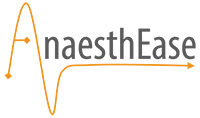A revolutionary local anaesthetic (LA) delivery solution
Providing accurate localised nerve detection and minimal exposure to nerve damage allowing a safe and effective LA delivery
What is AnaesthEase
AnaesthEase is an innovative needle technology which accurately detects a nerve action potential (SNAP) prior to administration of Local Anaesthetic. This high performance device offers clinicalprecision, simplicity of design and ease of use while focusing on patient safety.
The design involves 2 components – A glass insulated tungsten microelectrode and the Hypodermic needle. By incorporating these two components, the multi-disciplinary nature of AnaesthEase is an inspired solution that offers a more effective delivery of LA in the health sciences field.
Key Features

- Localised accurate nerve detection via SNAP
- Mitigates all possible nerve damage
- Effective, safe delivery of LA
- Biocompatible components
- Low cost
- Utilises the Identical skill set of clinicians
- Patient Anxiety relief
- Multi-disciplinary translational relevance
- Reduced medico-legal issues
Why AnaesthEase
There are approximately 350,000 dentists in Europe, with one dentist performing about 4 nerve blocks daily- 1.4million per day for fillings, extractions and implant surgeries. All regional nerve blocks are not without the danger of nerve damage. The risk of nerve injuries or neuropraxias is 6/10000 or 1000 neuropraxias per day. The success of any LA is the right drug, the right dose and at the right place – 3Rs. However, current techniques or devices do not achieve the 3Rs which is attested to previous medico-legal settlements due to nerve damage.
The current Local Anaesthetic (LA) delivery mechanisms present with problems such as blind administration, potential nerve trauma and damage, safety considerations for clinicians and patients and increased patient anxiety complaints.
Firstly, during an inferior alveolar nerve block anaesthesia, medical practitioners are administrating LA blind which could lead to nerve trauma for the patient and increased stress for the dental practitioner. Secondly, safety is of paramount importance and current techniques do not deliver anaesthetic in a completely safe manner- either into a nerve or accidental administration into a vessel. Lastly, patients who present to dental clinics suffer from varying degrees of anxiety but this is mainly due to possible failure of adequate nerve anaesthesia- again, not getting the right drug at the right place.
Hence, the very need for a device that address all the concerns of both medical practitioners and patients.



